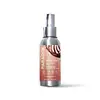What's inside
What's inside
 Key Ingredients
Key Ingredients

No key ingredients
 Benefits
Benefits

 Concerns
Concerns

No concerns
 Ingredients Side-by-side
Ingredients Side-by-side

Water
Skin ConditioningPolyglyceryl-4 Caprate
EmulsifyingPolyglyceryl-6 Caprylate
EmulsifyingGlycerin
HumectantSodium Benzoate
MaskingHydroxypropyl Guar Hydroxypropyltrimonium Chloride
Propylene Glycol
HumectantCitric Acid
BufferingPotassium Sorbate
PreservativePanthenol
Skin ConditioningLavandula Angustifolia Oil
MaskingPelargonium Graveolens Flower Oil
MaskingCitrus Aurantium Bergamia Fruit Oil
MaskingEucalyptus Globulus Leaf Oil
PerfumingArgania Spinosa Kernel Oil
EmollientAcetum
Linalool
PerfumingLimonene
PerfumingMentha Arvensis Leaf Oil
MaskingCitronellol
PerfumingGeraniol
PerfumingCocos Nucifera Oil
MaskingCaesalpinia Spinosa Fruit Extract
Skin ProtectingPhenoxyethanol
PreservativeHelianthus Annuus Sprout Extract
Skin ConditioningCitral
PerfumingUrtica Dioica Leaf Extract
Skin ConditioningMalva Sylvestris Flower Extract
Skin ConditioningWater, Polyglyceryl-4 Caprate, Polyglyceryl-6 Caprylate, Glycerin, Sodium Benzoate, Hydroxypropyl Guar Hydroxypropyltrimonium Chloride, Propylene Glycol, Citric Acid, Potassium Sorbate, Panthenol, Lavandula Angustifolia Oil, Pelargonium Graveolens Flower Oil, Citrus Aurantium Bergamia Fruit Oil, Eucalyptus Globulus Leaf Oil, Argania Spinosa Kernel Oil, Acetum, Linalool, Limonene, Mentha Arvensis Leaf Oil, Citronellol, Geraniol, Cocos Nucifera Oil, Caesalpinia Spinosa Fruit Extract, Phenoxyethanol, Helianthus Annuus Sprout Extract, Citral, Urtica Dioica Leaf Extract, Malva Sylvestris Flower Extract
Ingredients Explained
These ingredients are found in both products.
Ingredients higher up in an ingredient list are typically present in a larger amount.
Citric Acid is an alpha hydroxy acid (AHA) naturally found in citrus fruits like oranges, lemons, and limes.
Like other AHAs, citric acid can exfoliate skin by breaking down the bonds that hold dead skin cells together. This helps reveal smoother and brighter skin underneath.
However, this exfoliating effect only happens at high concentrations (20%) which can be hard to find in cosmetic products.
Due to this, citric acid is usually included in small amounts as a pH adjuster. This helps keep products slightly more acidic and compatible with skin's natural pH.
In skincare formulas, citric acid can:
While it can provide some skin benefits, research shows lactic acid and glycolic acid are generally more effective and less irritating exfoliants.
Most citric acid used in skincare today is made by fermenting sugars (usually from molasses). This synthetic version is identical to the natural citrus form but easier to stabilize and use in formulations.
Read more about some other popular AHA's here:
Learn more about Citric AcidGlycerin is already naturally found in your skin. It helps moisturize and protect your skin.
A study from 2016 found glycerin to be more effective as a humectant than AHAs and hyaluronic acid.
As a humectant, it helps the skin stay hydrated by pulling moisture to your skin. The low molecular weight of glycerin allows it to pull moisture into the deeper layers of your skin.
Hydrated skin improves your skin barrier; Your skin barrier helps protect against irritants and bacteria.
Glycerin has also been found to have antimicrobial and antiviral properties. Due to these properties, glycerin is often used in wound and burn treatments.
In cosmetics, glycerin is usually derived from plants such as soybean or palm. However, it can also be sourced from animals, such as tallow or animal fat.
This ingredient is organic, colorless, odorless, and non-toxic.
Glycerin is the name for this ingredient in American English. British English uses Glycerol/Glycerine.
Learn more about GlycerinPotassium Sorbate is a preservative used to prevent yeast and mold in products. It is commonly found in both cosmetic and food products.
This ingredient comes from potassium salt derived from sorbic acid. Sorbic acid is a natural antibiotic and effective against fungus.
Both potassium sorbate and sorbic acid can be found in baked goods, cheeses, dried meats, dried fruit, ice cream, pickles, wine, yogurt, and more.
You'll often find this ingredient used with other preservatives.
Learn more about Potassium SorbateSodium Benzoate is a preservative. It's used in both cosmetic and food products to inhibit the growth of mold and bacteria. It is typically produced synthetically.
Both the US FDA and EU Health Committee have approved the use of sodium benzoate. In the US, levels of 0.1% (of the total product) are allowed.
Sodium benzoate works as a preservative by inhibiting the growth of bacteria inside of cells. It prevents the cell from fermenting a type of sugar using an enzyme called phosphofructokinase.
It is the salt of benzoic acid. Foods containing sodium benzoate include soda, salad dressings, condiments, fruit juices, wines, and snack foods.
Studies for using ascorbic acid and sodium benzoate in cosmetics are lacking, especially in skincare routines with multiple steps.
We always recommend speaking with a professional, such as a dermatologist, if you have any concerns.
Learn more about Sodium BenzoateWater. It's the most common cosmetic ingredient of all. You'll usually see it at the top of ingredient lists, meaning that it makes up the largest part of the product.
So why is it so popular? Water most often acts as a solvent - this means that it helps dissolve other ingredients into the formulation.
You'll also recognize water as that liquid we all need to stay alive. If you see this, drink a glass of water. Stay hydrated!
Learn more about Water